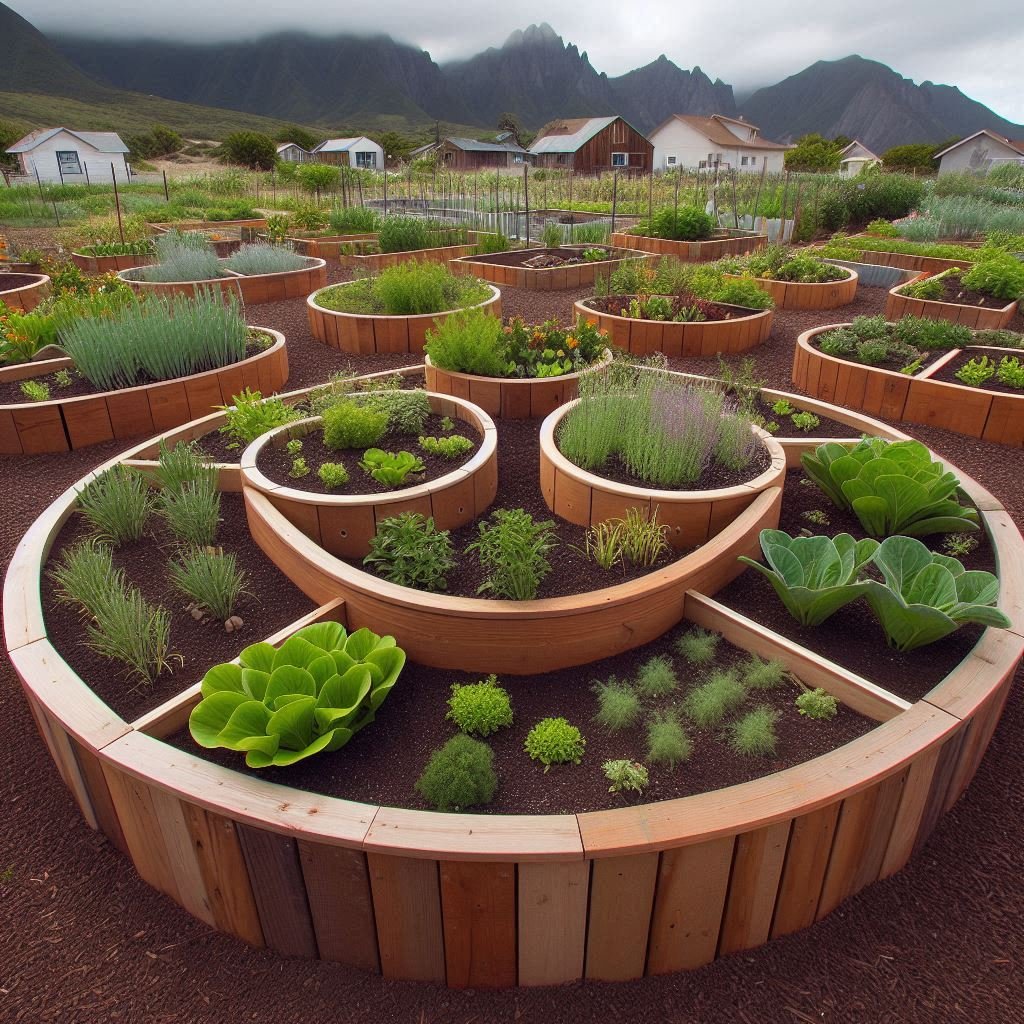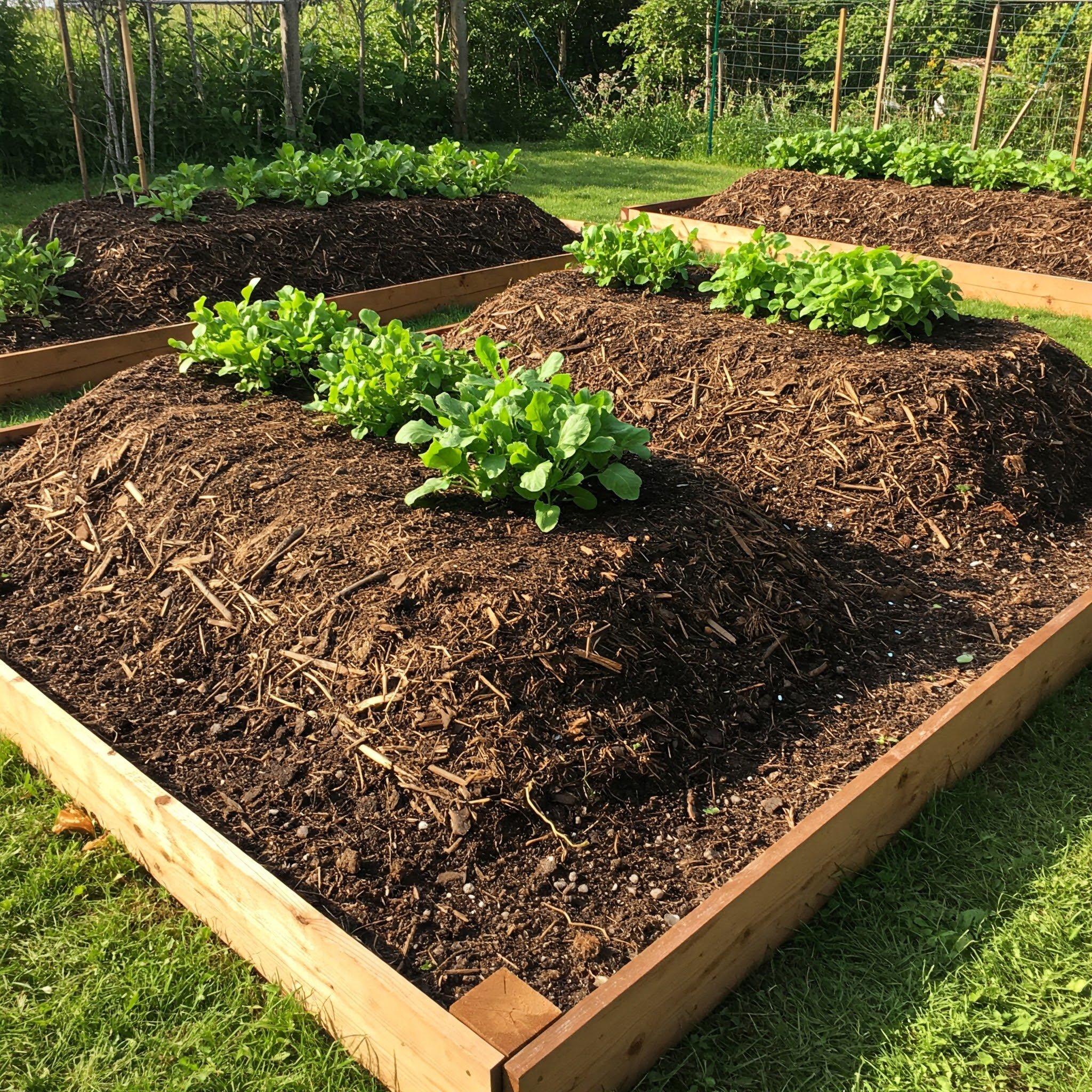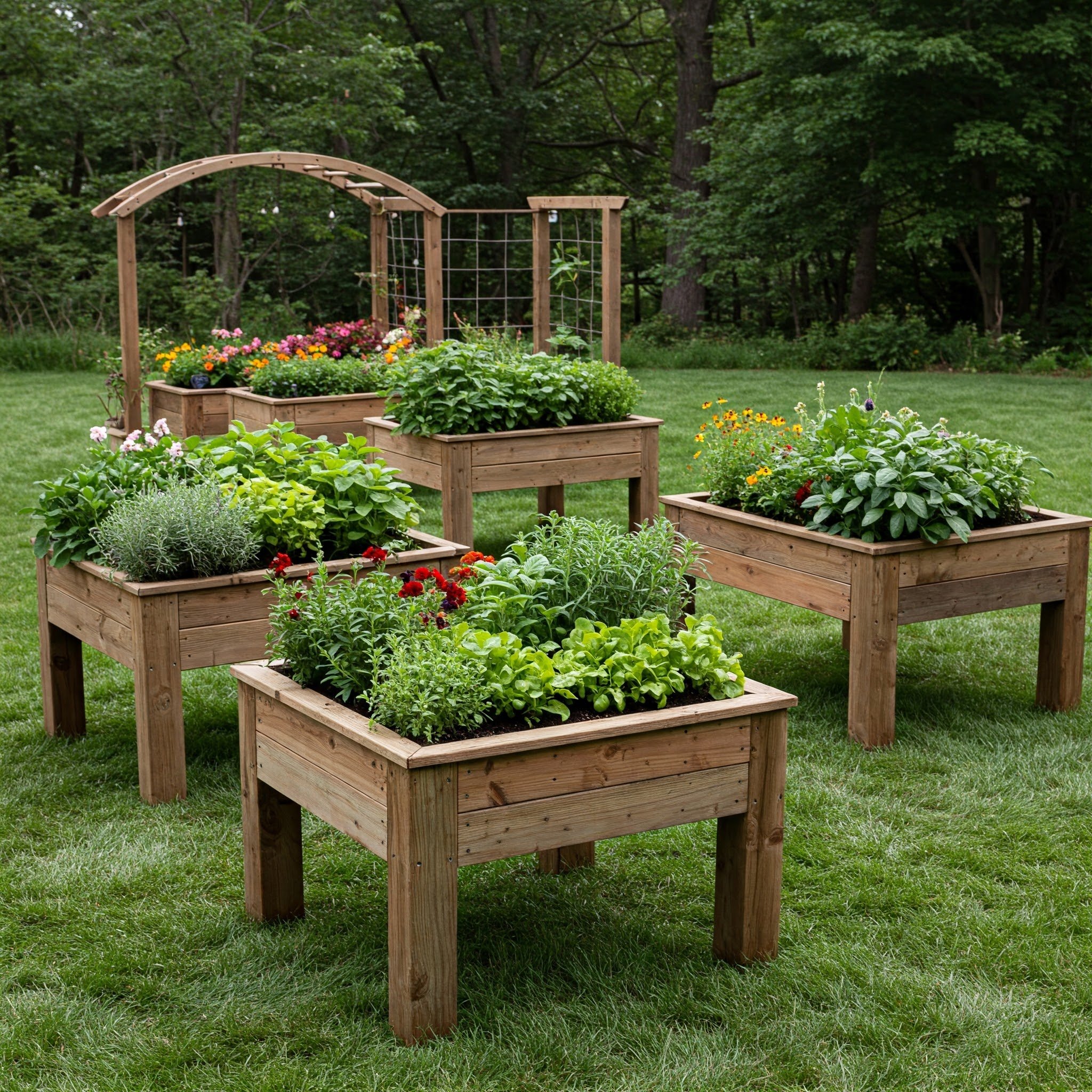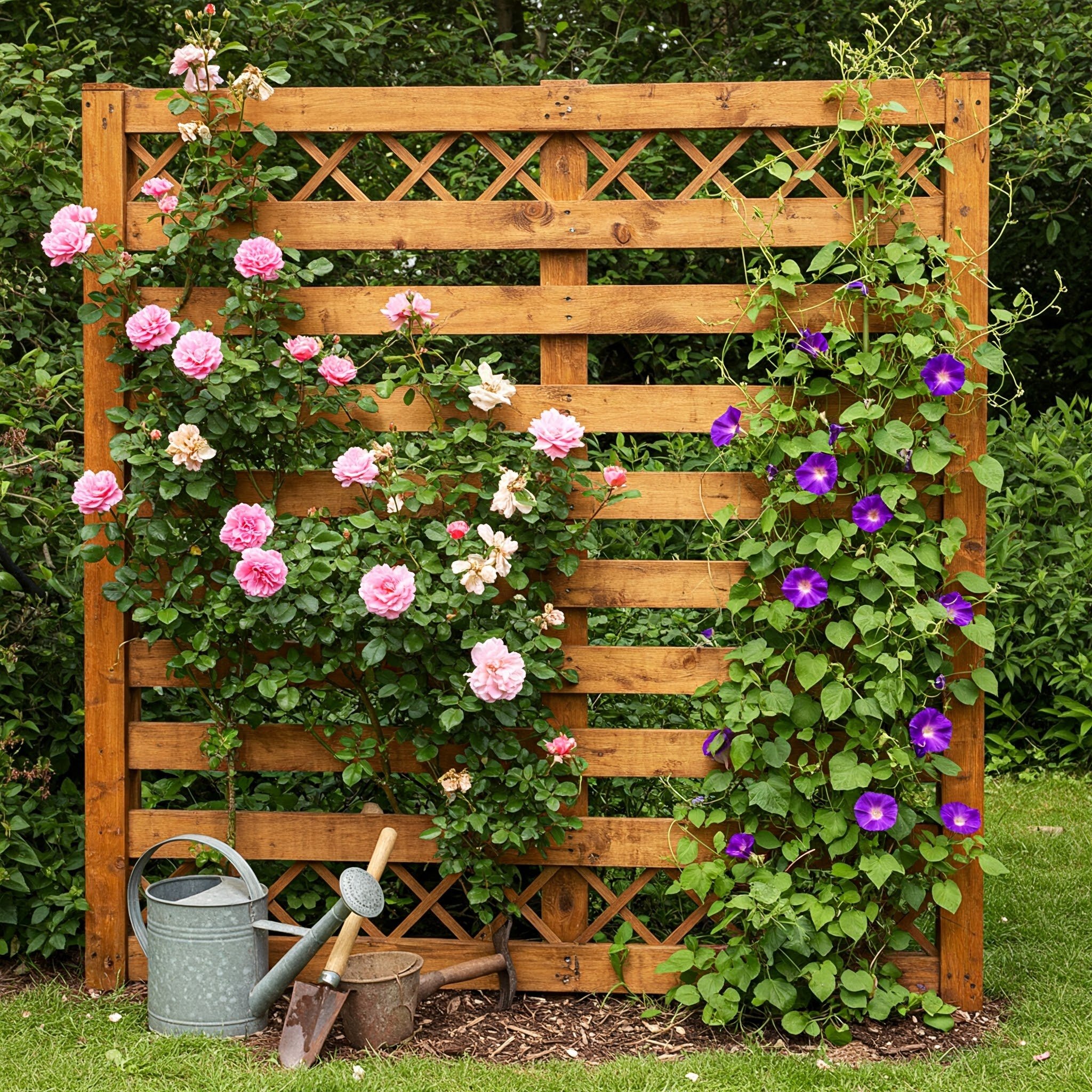15 Raised Garden Bed Ideas for Any Yard
Discover 15 inspiring raised garden bed ideas perfect for yards of all sizes. From upcycled containers to sleek modern designs, learn how to elevate your gardening game and cultivate a vibrant outdoor oasis.
Ever picture yourself stepping outside, coffee mug in hand, admiring a lush tapestry of homegrown veggies and flowers? Raised garden beds can turn that dreamy image into a reality—whether your backyard’s bigger than a football field or barely bigger than a parking space. Think of raised beds as comfy, elevated stages where your plants are the stars of the show. They’re easier on your back (no more hunching over rows on the ground), help with better soil control, and give you a chance to get really creative with design. In this guide, we’ll explore 15 raised garden bed ideas suited for just about any yard, so you can cultivate green goodness without breaking a sweat.
1: The Classic Wood-Framed Bed
Ah, the old faithful of raised garden beds. When you imagine a raised bed, there’s a good chance you’re picturing a rectangular wooden frame filled with dark, rich soil. The classic wood frame is timeless, relatively easy to build, and can be tailored to fit any space. Cedar, redwood, and cypress are common favorites for wood selection because they’re rot-resistant—like wearing a raincoat in a drizzle, they stand up better to moisture than other types of wood.
If you want a budget-friendly route, pressure-treated lumber or pine can work as well, but keep an eye out for chemicals that might leach into the soil. Lining the interior with plastic or a non-toxic sealant can help mitigate these concerns. Another perk of choosing wood? You can paint or stain it to match your home’s exterior or garden décor. Think of it as giving your yard an accent piece that also happens to be brimming with tomatoes, peppers, or whatever else your green thumb desires.
2: Upcycled Pallet Beds
Want a raised bed that’s wallet-friendly and planet-friendly? Look no further than pallets. You can often score free pallets from local hardware stores, garden centers, or even construction sites—just be sure to ask for permission before scooping them up. The best part? Giving new life to a discarded pallet is like adopting a stray puppy; it’s good for everyone involved.
When selecting pallets, check for heat-treated or kiln-dried stamps rather than chemically treated ones. Also, watch out for any signs of spills or stains, as you don’t want unknown substances leaching into your veggies. Constructing a pallet raised bed can be as simple as standing pallets on their sides to form the walls, then lining them with landscape fabric. Fill them up with quality soil and boom—you’ve got an upcycled bed that’s both cool-looking and functional.
3: Stylish Metal Trough Beds
For those who dig an industrial-chic vibe, metal troughs or galvanized containers make an eye-catching and modern statement in the backyard. Picture a shiny metal tub brimming with basil, cilantro, and thyme—it’s like a culinary wonderland right at your doorstep. These containers are also super durable, provided you ensure proper drainage.
One thing to keep in mind with metal is that it can heat up quickly in direct sunlight (kind of like touching a metal car door in mid-summer). To protect your plants, consider using a liner or placing your trough in an area that gets partial shade during the hottest part of the day. Rust can also be an issue over time, but many galvanized containers are made to resist corrosion, extending their lifespan. It’s a small price to pay for a raised bed that doubles as a conversation starter whenever guests visit.
4: Vertical Raised Beds
Raise your hand if you’re short on space but big on ambition. Vertical raised beds could be just the ticket. Think of them as living walls—structures that allow you to grow upward rather than outward. Wooden frames equipped with pockets, shelving units, or tiered boxes create a green tapestry that’s both striking and space-efficient. Instead of a typical “box on the ground,” you’re essentially giving your plants a condo tower to occupy.
What can you plant in a vertical setup? Herbs like rosemary, parsley, and oregano are prime candidates, but you can also grow strawberries, lettuce, and even small peppers. Just ensure you have a sturdy frame that can handle the weight of fully grown plants and moist soil. Proper watering systems, like drip irrigation or self-watering inserts, can make your vertical bed practically self-sustaining—your plants will be living the high life, literally!
5: Tiered Stair-Step Beds
Tiered or “stair-step” beds are the horticultural equivalent of a multi-level wedding cake—each layer serves a purpose and looks fantastic. This design maximizes vertical space by stacking multiple beds in ascending order. Whether you have a sloped yard or you’re just aiming for some visual drama, tiered beds deliver both function and flair.
You can use wood, concrete blocks, or even bricks to create these layered segments. The lower tier might be ideal for root vegetables or sprawling vines, while the upper tiers can house smaller plants or quick-harvest veggies. The possibilities are endless, and as a bonus, you’ll have an easier time rotating crops or managing different soil types for varied plant needs. It’s like giving each plant its own VIP balcony.
6: Woven Willow or Wicker Beds
If you’re aiming for an earthy, fairy-tale vibe, woven willow or wicker raised beds might fit the bill. This style offers plenty of breathability for the soil and retains a natural, rustic charm—like something you’d find in a quaint English cottage garden. The fences of woven willow are typically crafted by weaving pliable branches around sturdy stakes, creating a basket-like enclosure for your soil and plants.
The main trade-off here is longevity. Willow or wicker won’t last as long as other materials like cedar or metal, especially if exposed to harsh weather. Still, if you’re looking for a short-to-medium-term solution that looks whimsically beautiful, you might not mind the extra TLC. A coat of natural sealant can extend its life just a bit longer, ensuring you can savor that storybook look all season long.
7: Brick and Mortar Beds
Looking for something more permanent? Brick and mortar raised beds could be your calling. Imagine a crisp, red-brick enclosure that not only frames your flowers and veggies but also ties seamlessly into any brick accents on your home. This choice is a bit more labor-intensive (and potentially more expensive) than simpler builds, but the payoff is a raised bed that’s as stable as a fortress.
Bricks also offer excellent temperature regulation for soil, absorbing heat during the day and releasing it slowly at night—kind of like giving your plants a cozy blanket after sunset. You can get creative with design, too: incorporate patterns, vary the bed’s height, or use different-colored bricks for a bold aesthetic. It’s essentially a mini architectural project that yields not just produce, but curb appeal.
8: Cinder Block Creations
Cinder blocks might not sound glamorous, but wait until you see how versatile they can be. These rectangular building blocks fit together like puzzle pieces, giving you the freedom to create any shape or height you like. Ever dreamt of an L-shaped or circular raised bed? With cinder blocks, consider that dream checked off your list.
A hidden bonus is the hollow centers of the blocks, which can double as mini planters. Fill them with herbs or small ornamental flowers for a pop of color around the bed’s perimeter. You can also paint or decorate the exposed sides to align with your garden’s theme—turning something once considered “industrial” into a crafty, personalized gardening vessel. The only real challenge might be hauling them into place, so brace your muscles or recruit some help.
9: Straw Bale Raised Beds
If you’re someone who loves the smell of fresh hay and the idea of reusing natural materials, straw bale gardening might pique your curiosity. Imagine your yard dotted with straw bales arranged in tidy rows or squares, each becoming a mini greenhouse of decomposing organic matter. Over time, the bales break down, creating a nutrient-rich environment for whatever you choose to grow—tomatoes, lettuce, cucumbers, or even flowers.
Before planting, you’ll need to “condition” the bales—essentially a process of watering and adding nitrogen fertilizer to jumpstart decomposition. Once the bale’s interior heats up and then cools off, it’s ready to receive seeds or seedlings. It’s almost like cooking a casserole: you have to preheat, let it bake, and cool it before enjoying. Straw bale beds are perfect for temporary or short-term solutions, or if you want to skip constructing a frame altogether.
10: Keyhole Garden Beds
Keyhole gardens hail from regions where water conservation and efficient composting are essential. They’re round or square raised beds with a notch or “keyhole” cut into them, making it easy to reach the center compost basket. Picture a donut with a bite taken out of it—except, in this donut’s center is a basket where you deposit kitchen scraps and yard waste that nourish the surrounding soil.
Beyond the novelty factor, keyhole gardens are excellent for yards dealing with poor soil quality or limited irrigation options. The central composting area breaks down scraps, delivering nutrients straight to plant roots. If you’re the type who loves multi-taskers—like a smartphone that also doubles as a camera, music player, and alarm clock—then you’ll appreciate how a keyhole garden elegantly merges composting, watering, and planting in one tidy structure.
11: Fabric Grow Bags and Planters
Maybe you’re more of a digital nomad, or you rent and aren’t sure how long you’ll stay put. Fabric grow bags or planters are the perfect raised bed solution for those who crave flexibility. Made from breathable, permeable materials, these bags encourage healthy root growth by preventing the dreaded root circling that can happen in traditional plastic pots.
Though not technically a “bed,” grouping multiple fabric bags together can create a makeshift raised garden system. You can even pop them on your deck, balcony, or porch. Watering can be a bit tricky—these bags drain quite well, so you might need to water more frequently (think of it like hydration breaks for an athlete). On the plus side, you can move them around to catch the perfect amount of sunlight throughout the season.
12: Balcony-Friendly Container Beds
Don’t have a backyard at all? No worries! Balcony-friendly container beds ensure you can still exercise your green thumb, even if you’re several floors up. Whether you opt for rectangular planters or specialized railing-hugging boxes, container gardening is an art of its own. The trick lies in choosing the right pots—preferably made of durable materials like resin, ceramic, or untreated wood—and ensuring adequate drainage.
Imagine gazing out at your city skyline from a balcony brimming with fragrant basil, juicy cherry tomatoes, and colorful petunias. It’s like having your own personal slice of Eden in the midst of urban hustle and bustle. Just be sure to consider weight limits if you’re placing large or multiple containers, and think about how easily you can access them for watering, pruning, or harvesting. With careful planning, you can transform a plain old balcony into a thriving micro-garden oasis.
13: Hugelkultur-Style Mounds
Hugelkultur is a German word that roughly translates to “hill culture,” and it’s just as intriguing as it sounds. Essentially, you start by laying down logs, branches, or other decomposing wood materials, then layer compost, leaves, grass clippings, and soil on top to form a mound. Over time, the wood breaks down, improving soil structure and providing a steady release of nutrients. It’s like a slow-cooking stew for your plants, simmering away year after year.
While hugelkultur can be done at ground level, raising the mound’s sides—either with logs or a low wall—keeps everything neat and helps retain moisture. This method thrives on the principle that nature wastes nothing. If you love an eco-friendly approach and enjoy the idea of building a mini-ecosystem in your backyard, hugelkultur mounds could become your new pet project.
14: Raised Bed Kits for Beginners
If the idea of sourcing wood, measuring angles, and hauling materials makes you break out in a cold sweat, pre-fabricated raised bed kits are your saving grace. These kits come with everything you need—panels, connectors, sometimes even liners—and snap or screw together like an IKEA project. They’re typically made of wood, metal, vinyl, or composite materials, so you can pick a style that suits your taste and budget.
Sure, kits might lack the flair of a custom creation, but what they lack in originality, they make up for in convenience. Think of it like buying a pre-made cake versus baking one from scratch—sometimes, you just want to enjoy the dessert without all the fuss. Once assembled, you simply fill the kit with soil and get planting. In hours, your yard can go from ho-hum to bustling botanical wonderland.
15: Elevated Table Beds
For gardeners who dread the idea of kneeling in the dirt or those with mobility challenges, elevated table beds are a brilliant solution. These raised beds are built at about waist height, so you can tend to your plants standing up or seated in a chair—no acrobatics required. They look like large wooden boxes on sturdy legs, essentially combining the best parts of container gardening and raised beds into one ergonomic design.
Herbs, leafy greens, and shallow-rooted vegetables flourish in table beds because they don’t demand super-deep soil. Some designs even include shelves underneath for storing gardening tools or extra pots. The elevated style keeps pests like slugs at bay (though watch out for the occasional ambitious squirrel). If you’re aiming to create a visually cohesive entertainment area, add a few matching bar stools, so guests can perch beside your basil as they chat. You’ve just turned your garden bed into an interactive conversation piece!
Conclusion
When it comes down to it, raised garden beds are more than a practical solution—they’re a canvas for your creativity. Whether you’re all in on the DIY scene, scouring your local flea market for old pallets and troughs, or leaning toward sleek, contemporary kits that assemble in a snap, there’s a design out there that will speak to your personal style and gardening goals. Picture the satisfaction of plucking a sun-ripened tomato right off the vine or snipping fresh herbs for tonight’s dinner while they’re still glistening from a watering. That’s the experience raised beds can deliver, no matter how modest or massive your yard might be.
The trick is to assess your space, your budget, and the time you’re willing to invest. Then go for it—experiment, adapt, and turn your yard into the green retreat you’ve always dreamed of. After all, there’s nothing quite like nurturing your own little patch of Earth, giving life to seeds, and watching them blossom. So go ahead, roll up those sleeves, pick a style that suits your fancy, and get growing!
Frequently Asked Questions
Do I need special soil for raised garden beds?
Yes and no. While you can use regular garden soil, it’s best to mix it with compost and possibly a high-quality potting mix for better drainage and nutrient availability. Think of it like giving your plants a five-star hotel stay—they’ll thank you with stronger growth.
How often should I water my raised beds?
Frequency depends on your climate, the type of plants, and the bed’s material. For example, metal troughs can heat up and dry out faster, while wooden beds might retain moisture a bit longer. In general, watering daily in hot weather is common—just keep an eye on the soil’s moisture level.
Can I build a raised bed on a hard surface like concrete?
Absolutely! Just ensure proper drainage by adding a barrier (like weed fabric) and possibly gravel at the bottom before filling with soil. Elevated table beds or large containers are also excellent choices for concrete or balcony situations.
Will raised beds help with pest control?
They can, to some extent. Being above ground makes it a bit harder for certain pests like slugs or ground-dwelling insects to invade. However, you might still need to implement pest management strategies—like netting or companion planting—to keep more determined critters at bay.
How deep should a raised garden bed be?
Most vegetables do well with 6 to 12 inches of soil depth. If you plan to grow root vegetables like carrots or potatoes, aim for at least 12 inches. But remember, you can always build deeper beds if you have the space and resources—your plants certainly won’t complain about extra room to spread their roots!
Stay up to date with our latest ideas!













































